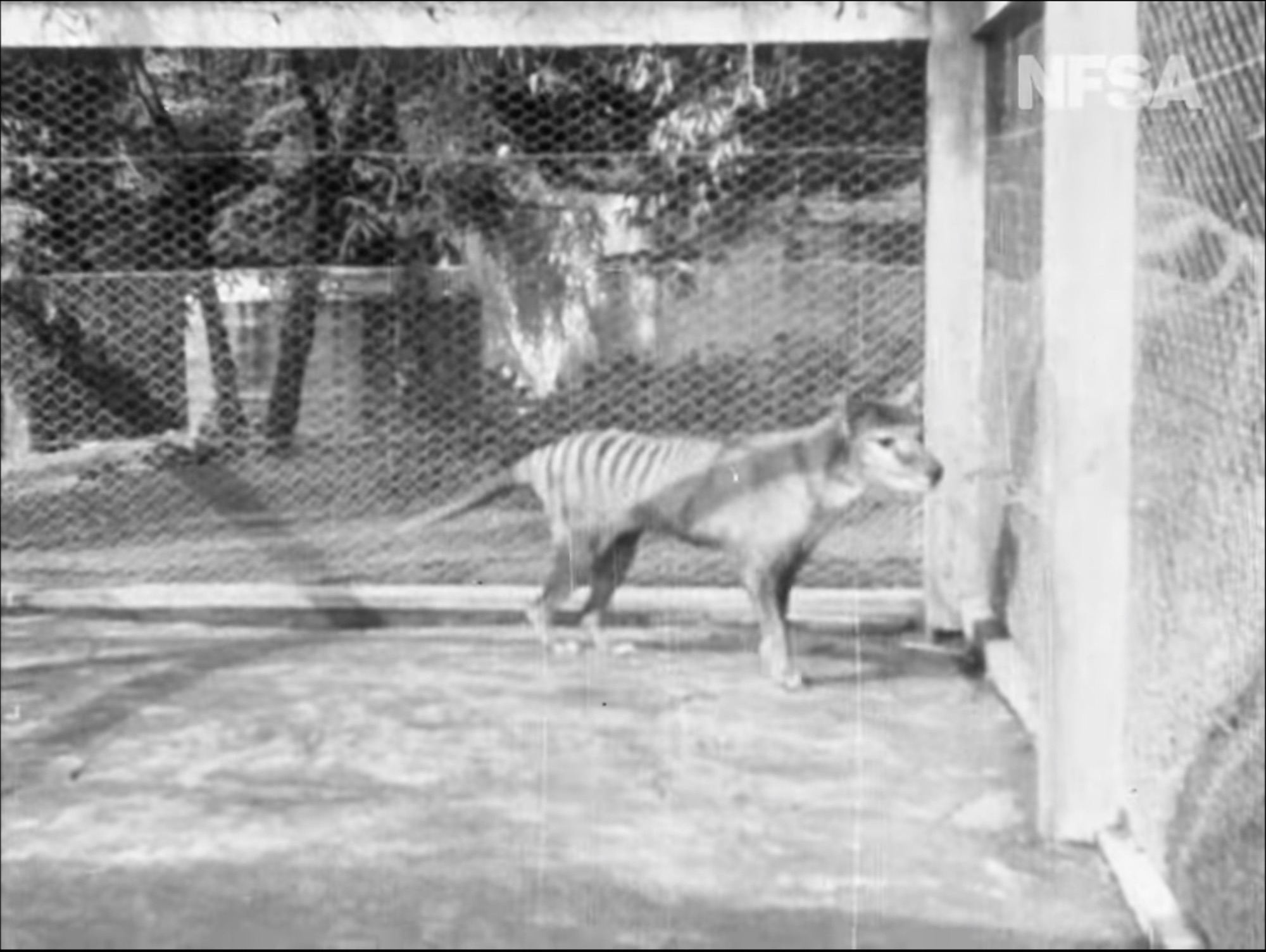Last-known video of 'Tasmanian tiger' rediscovered
Just months after the video was shot, that thylacine died.

A rediscovered black-and-white video clip is the last-known footage of the thylacine — also known as the Tasmanian tiger — that was recorded before the marsupial went extinct in 1936.
The 21-second clip shows a thylacine (Thylacinus cynocephalus) pacing in an enclosure at the long-closed Beaumaris Zoo in Tasmania, while a narrator talks about the creature's rarity and quirks including its "striped, unjointed tail."
"Though, like the [Tasmanian] devil, [the thylacine] is now very rare, being forced out of its natural habitat by the march of civilization," the narrator says in the 1935 clip. "This is the only one in captivity in the world."
Related: Australia's struggling marsupial: Photos of the Tasmanian devil
There are fewer than a dozen other short films, amounting to just over 3 minutes of footage, that showcase the thylacine before its extinction. But these black-and-white snippets — taken at Beaumaris Zoo and London Zoo — are silent; the newfound one is the only known footage to have sound, according to a statement from the National Film and Sound Archive (NFSA) of Australia.
This is the first time in 85 years that the newfound clip is being released to the public, the NFSA said. It was found within a forgotten 1935 travelogue called "Tasmania the Wonderland," by researchers at the Tasmanian Tiger Archives, a group that documents thylacine-related material.
In the newly discovered clip, zookeeper Arthur Reid and an associate rattle the thylacine's cage, likely to get the predator to act up or do one of its "threat yawns," which can be seen in this 1933 video clip.
Sign up for the Live Science daily newsletter now
Get the world’s most fascinating discoveries delivered straight to your inbox.
That thylacine's "yawn" was meant to be menacing to anything threatening it, Cameron Campbell, curator of the Thylacine Museum website, told NPR in 2014. Both clips, the 1933 one and the newfound clip, show the last captive thylacine, nicknamed Benjamin, although the creature's sex is still unknown.
It's thought that the 9-minute-long "Tasmania the Wonderland" was filmed by Sidney Cook (1873–1937), a Brisbane-based filmmaker and exhibitor. It was recorded more than 12 months after the last-known footage of a thylacine, which was taken in December 1933.
Months after this newfound 1935 clip was taken, Benjamin died on Sept. 7, 1936. Even though it was the last thylacine in captivity, its body was not preserved, NPR reported. Thylacines were once common in Tasmania, but their numbers plummeted after Europeans settled there in 1803, according to a 2013 study in the Journal of Animal Ecology, which found that humans alone were responsible for the marsupial's demise.
Despite the dearth of thylacine footage, the NFSA said it's possible that more film may yet be uncovered. Thylacines were shown in zoos in Australia as well as in big cities around the world, including Washington, D.C., New York, London, Antwerp and Berlin; so perhaps unreleased photos or film exist from one of these places, the NFSA said.
"Remaining to be uncovered are footage of a thylacine in color, roaming in the wild or — most hopefully — film with location sound that reveals any sound made by the animal," the NFSA wrote in the statement.
- Real or not? The science behind 12 unusual sightings
- 6 extinct animals that could be brought back to life
- Marsupial gallery: A pouchful of cute
Originally published on Live Science.
OFFER: Save 45% on 'How It Works' 'All About Space' and 'All About History'!
For a limited time, you can take out a digital subscription to any of our best-selling science magazines for just $2.38 per month, or 45% off the standard price for the first three months.

Laura is the archaeology and Life's Little Mysteries editor at Live Science. She also reports on general science, including paleontology. Her work has appeared in The New York Times, Scholastic, Popular Science and Spectrum, a site on autism research. She has won multiple awards from the Society of Professional Journalists and the Washington Newspaper Publishers Association for her reporting at a weekly newspaper near Seattle. Laura holds a bachelor's degree in English literature and psychology from Washington University in St. Louis and a master's degree in science writing from NYU.











